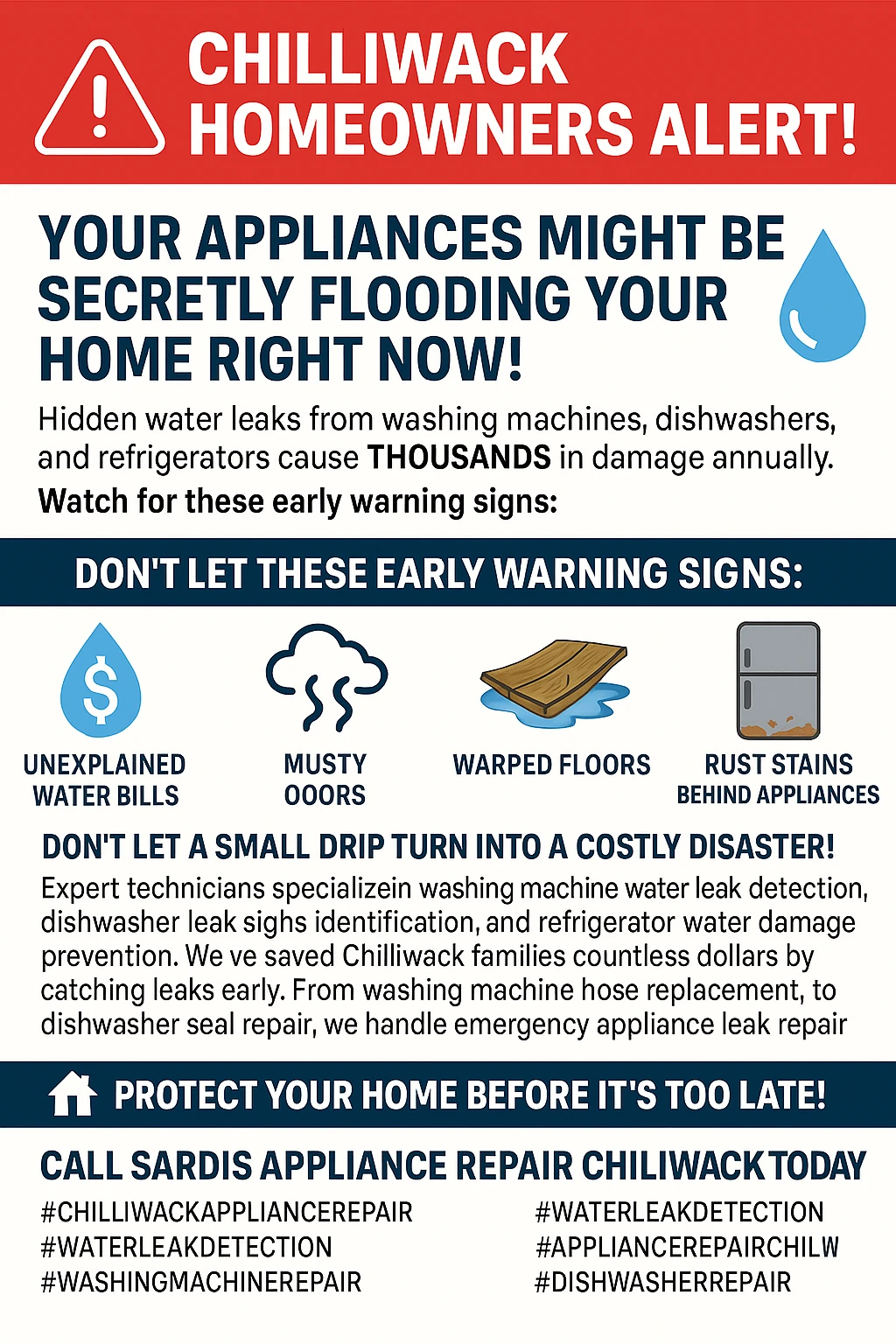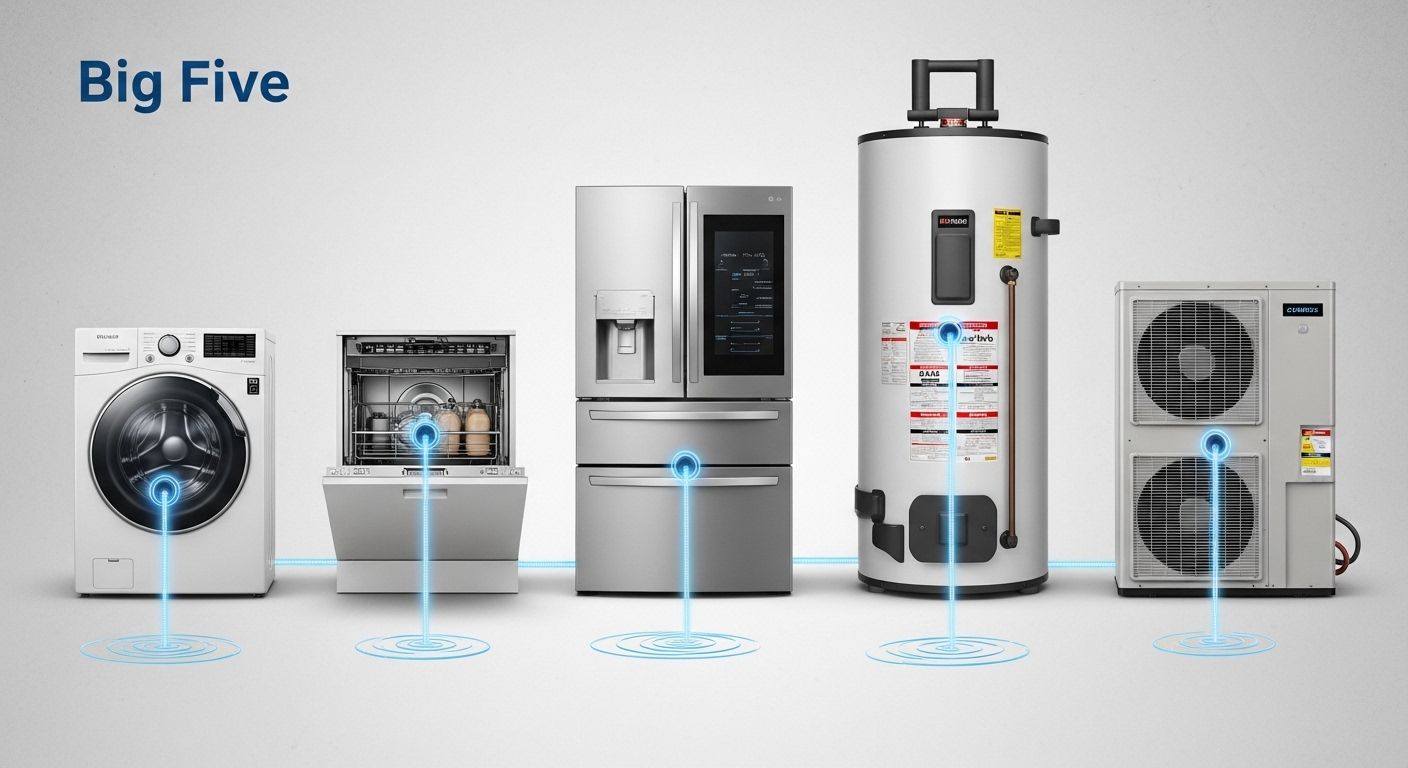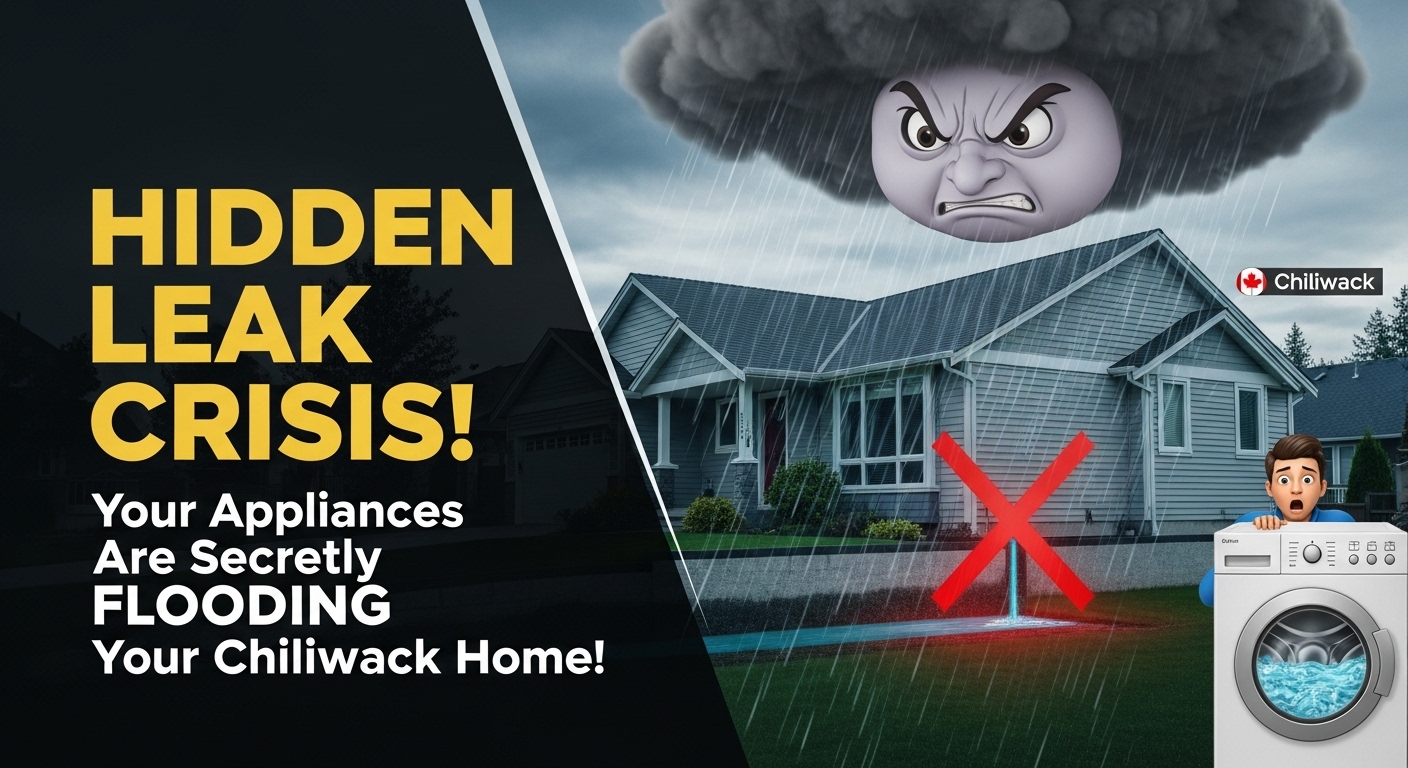The Hidden Water Leak Crisis: How Your Appliances Are Secretly Flooding Your Chiliwack Home (And the Early Warning Signs That Could Save You Thousands)
Experiencing appliance water leaks in your Chiliwack home and wondering how serious the threat really is? You’re facing a crisis that affects 1 in 12 homes annually – making it eight times more likely than burglary and significantly more devastating than most homeowners realize.Picture this: you’re enjoying a quiet Saturday morning when you discover a puddle forming beneath your washing machine. What seems like a minor inconvenience is actually part of a hidden epidemic plaguing homes across Chiliwack and beyond. While most homeowners worry about dramatic disasters like fires or break-ins, the real threat is quietly gurgling behind the scenes in our laundry rooms, kitchens, and basements.The statistics are staggering and eye-opening. Water damage from household appliances represents a more pressing concern than traditional home security threats, with plumbing leaks occurring in 1 in 12 homes annually compared to burglary affecting only 1 in 36 homes. This silent crisis costs insurance companies more than $13 billion annually, with 45% of all insurance losses stemming from water and freeze damage. For Chilliwack residents, the implications are particularly severe given our region’s unique climate conditions and the prevalence of basement installations common throughout the Fraser Valley.The most shocking revelation? Just one inch of standing water can cause up to $25,000 in damage to a typical home. That seemingly innocent puddle beneath your dishwasher could be the first sign of a financial disaster that will impact your family for years to come. But here’s the good news – this crisis is entirely preventable when you know what to look for and how to act. [IMAGE PLACEHOLDER FOR IMAGE1]
Key Takeaways:
- Appliance water leaks affect 1 in 12 homes annually, making them significantly more likely than burglary or fire damage
- Just one inch of standing water can cause up to $25,000 in damage to a typical home
- Five common household appliances account for the majority of water damage incidents: washing machines, dishwashers, refrigerators, water heaters, and HVAC systems
- Early detection through regular inspection and smart monitoring systems can prevent 90% of catastrophic appliance water damage
- Chilliwack’s climate creates unique challenges with high humidity and temperature fluctuations that accelerate appliance deterioration

The Scope of Chilliwack’s Hidden Water Crisis
The reality of appliance water damage extends far beyond what most Chilliwack homeowners imagine. While we diligently lock our doors and install security systems to protect against the remote possibility of burglary, we’re ignoring a threat that’s eight times more likely to strike our homes. Water damage consistently ranks among the most common causes of home insurance claims, with about 25% of home insurance claims filed from 2018 to 2022 being due to water damage or freezing, with the average claim costing nearly $14,000.The scope of this crisis becomes even more alarming when we examine the daily reality of water loss in our homes. About 8.1% of homes experience a plumbing leak each year, with plumbing leaks causing more than $13 billion in claims paid by U.S. insurers annually. Hidden leaks can cause average households to lose nearly 10,000 gallons of water per year, and even a seemingly minor two-drip-per-second pinhole leak will accumulate to 77 gallons in just one week. This constant water loss not only drives up utility bills but creates the perfect conditions for major structural damage and mold growth.Chilliwack faces unique vulnerability factors that amplify this national crisis. Our regional climate can lead to varied water-related challenges, making water and flood damage restoration services key to quickly addressing damage and ensuring effective property restoration. The city’s frequent rainfall and high humidity levels mean water damage incidents are unfortunately common, creating a perfect storm of environmental conditions that stress appliance seals, connections, and components beyond their designed limits.What makes this crisis particularly insidious in Chilliwack homes is the basement factor that compounds damage potential. Unlike single-level homes where appliance failures affect only immediate surrounding areas, Chilliwack’s common basement installations create scenarios where water damage can affect multiple levels and structural elements simultaneously. When a washing machine in the basement develops a leak, water doesn’t just damage the immediate floor area – it can seep into foundation walls, compromise electrical systems located in basements, and create moisture problems that travel upward through the home’s structure.

The Big Five: Primary Appliance Culprits Behind Water Damage

Understanding which appliances pose the greatest threat helps Chilliwack homeowners focus their prevention efforts where they’ll have the most impact. Five specific appliances account for the vast majority of household water damage incidents, each with distinct failure patterns and warning signs that can save thousands in repair costs when identified early.Washing machines lead the pack as the most dangerous water damage culprit in homes across Chilliwack. These appliances are one of the leading causes of household water damage, with faulty hoses being the most common culprit as hoses connecting washing machines to water supply can deteriorate over time, with cracks, loose fittings, or wear leading to leaks. The problem intensifies when homeowners don’t realize that washing machine hoses should be replaced every three to five years regardless of visible wear. Overloading the machine can strain the drum and throw off the machine’s balance, causing movement that can loosen hose connections or cause water to spill from front-loading model doors.The washing machine threat extends beyond simple hose failures. Water damage patterns from washing machines include water pooling around or near the washer, warped or buckled floors especially with hardwood or laminate, swollen or warped baseboards, and bubbling or peeling paint. These signs indicate that damage has already begun, often spreading beyond the immediate laundry area into adjacent rooms and lower levels of the home. The high-volume nature of washing machine water supply means that when failures occur, they can release hundreds of gallons in a matter of hours.Dishwashers represent the second major threat, operating as silent leakers that often go undetected for extended periods. Water damage caused by dishwashers is quite common, with several reasons including connected water lines where any hoses and valves could break or wear down, plus damaged seals, latches, or gaskets that can leak water. Modern dishwashers include built-in sensors around the solid-mold base and tub, so if the dishwasher develops cracks or becomes unsteady due to leveling, water can seep through openings, alerting sensors to halt dishwasher operation.The challenge with dishwasher leaks lies in their gradual development and hidden location beneath countertops. Over time, seals and gaskets around dishwasher doors can wear out, leading to leaks, requiring periodic inspection for signs of damage or deterioration. Many homeowners only discover dishwasher leaks after significant damage has occurred to kitchen flooring, cabinets, and underlying subflooring structures.Refrigerators pose a complex water damage threat due to their multiple water-connected systems and constant operation. Modern refrigerators have built-in ice makers for convenience, but this feature can be inconvenient because it’s a common cause of refrigerator leaks, with water lines connected to ice makers where connectors may wear out with age or crack. A blocked defrost drain is a common cause of leaky refrigerators, occurring when food particles and other foreign objects obstruct the drain hose, leading to ice buildup and eventual water leaks onto the floor.Chilliwack’s high humidity levels create additional challenges for refrigerator operation. High humidity levels can cause excess moisture to get into refrigerators each time the door opens, building up over time and causing water to pool inside. This excess moisture not only creates leaking problems but forces refrigerators to work harder, increasing wear on components and accelerating the timeline for major failures. The constant cycling between humid outdoor air and cold interior temperatures creates condensation problems that can overwhelm drain systems and create persistent leak issues.
Water Heaters: High-Volume Catastrophic Potential
Water heaters represent perhaps the most catastrophic single-appliance water damage threat facing Chilliwack homes. Old water heaters are more likely to spring a leak, with several reasons including age, loose drain valves, excess pressure, loose connections, and cracked storage tanks. Water heaters hold several gallons of water, and when one begins to leak it can cause considerable water damage to floors, walls, and furniture. The sudden failure potential of water heaters makes them particularly dangerous, as a tank failure can release 40-80 gallons of water in minutes.HV
 (604) 305-2992
(604) 305-2992 
 Schedule An Appointment
Schedule An Appointment 
